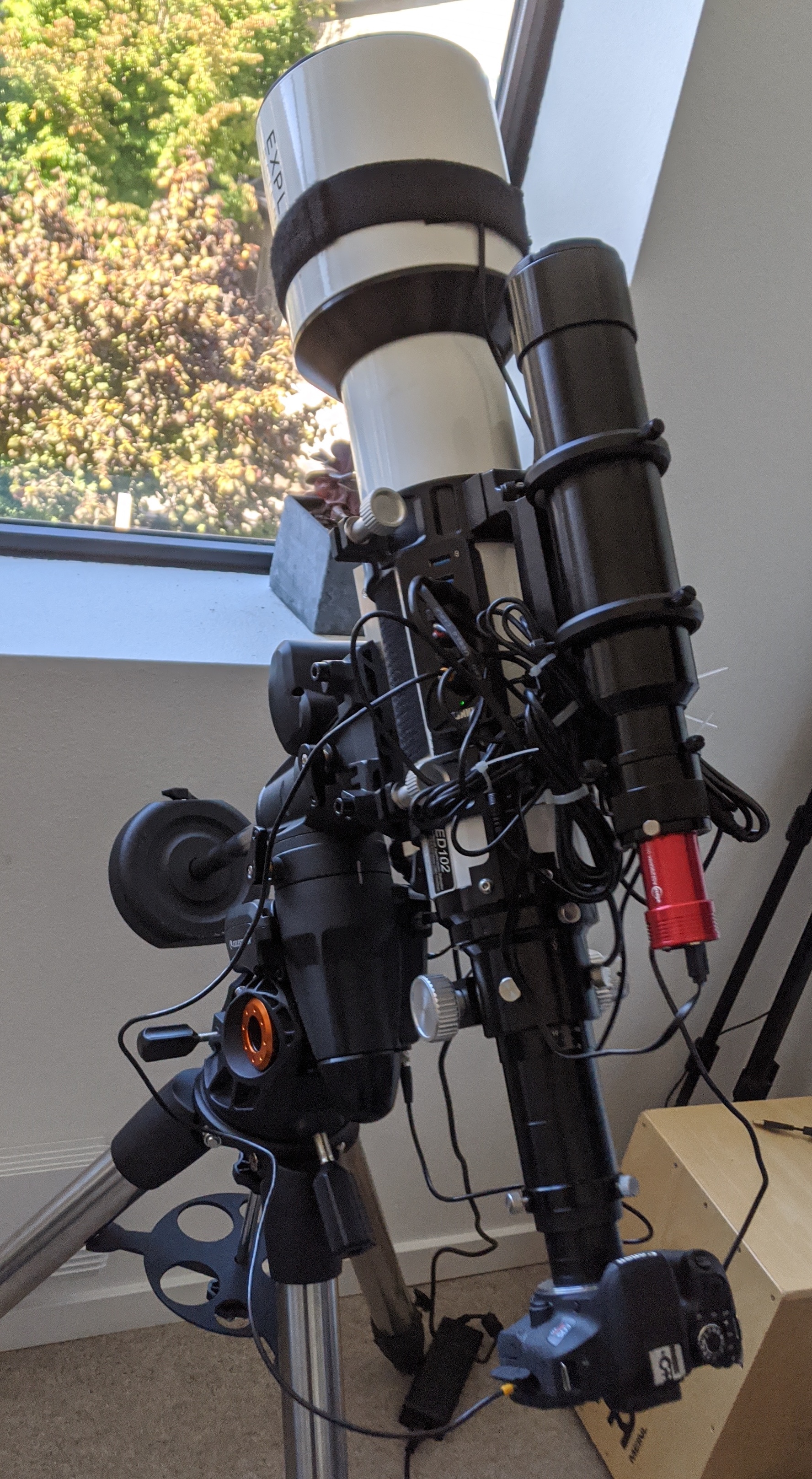When I first got started with astrophotography, I hadn’t realized how important auto-focusing and auto-guiding would be to making the most of limited time under clear skies and capturing quality data. In particular, I didn’t know how much of a challenge it would be to even get good polar alignment without a guide camera (as none of the alignment software I tried to use would even recognize my 800D as a valid input). I did eventually come around and picked up a ZWO 60MM guide scope and the QHY5L-II color camera, thinking that it would be a reasonably priced guide scope and optionally planetary camera.
Getting the ZWO 60MM mounted on my ED102 OTA wasn’t too bad, as the carrying handle of the ED102 doubles as a raised mounting bar with enough clearance to avoid interference with the dew shield. A few extra long bolts from Lowe’s and the mounting plate that came with the ZWO got the job done.
Unfortunately I never could get the QHY to work well enough in my light-polluted skies to successfully polar align in SharpCap. Wound up replacing it (thankfully it does at least work well for planetary) with an ASI 290MM mini. Results were pretty immediate the next night I was able to try it out, and since switching I’ve never had an issue with not being able to find a suitable guide star even with the 60MM scope. I did, however, quickly need to pick up a small-sized dew heater band. The humid Seattle nights fog up my guidescope very quickly without one.
